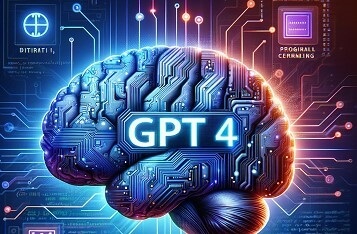Unraveling ChatGPT Jailbreaks: A Deep Dive into Tactics and Their Far-Reaching Impacts

Exploring the intricacies of ChatGPT jailbreak strategies, this paper delves into the emerging vulnerabilities and the advanced methodologies developed to evaluate their effectiveness.
In a digital era dominated by the rapid evolution of artificial intelligence led by ChatGPT, the recent surge in ChatGPT jailbreak attempts has sparked a crucial discourse on the robustness of AI systems and the unforeseen implications these breaches pose to cybersecurity and ethical AI usage. Recently, a research paper “AttackEval: How to Evaluate the Effectiveness of Jailbreak Attacking on Large Language Models” introduces a novel approach to assess the effectiveness of jailbreak attacks on Large Language Models (LLMs) like GPT-4 and LLaMa2. This study diverges from traditional evaluations focused on robustness, offering two distinct frameworks: a coarse-grained evaluation and a fine-grained evaluation, each utilizing a scoring range from 0 to 1. These frameworks allow for a more comprehensive and nuanced evaluation of attack effectiveness. Additionally, the research has developed a comprehensive ground truth dataset specifically tailored for jailbreak tasks, serving as a benchmark for current and future research in this evolving field.
The study addresses the growing urgency in evaluating the effectiveness of attack prompts against LLMs due to the increasing sophistication of such attacks, particularly those that coerce LLMs into generating prohibited content. Historically, research has predominantly focused on the robustness of LLMs, often overlooking the effectiveness of attack prompts. Previous studies that did focus on effectiveness often relied on binary metrics, categorizing outcomes as either successful or unsuccessful based on the presence or absence of illicit outputs. This study aims to fill this gap by introducing more sophisticated evaluation methodologies, including both coarse-grained and fine-grained evaluations. The coarse-grained framework assesses the overall effectiveness of prompts across various baseline models, while the fine-grained framework delves into the intricacies of each attack prompt and the corresponding responses from LLMs.
The research has developed a comprehensive jailbreak ground truth dataset, which is meticulously curated to encompass a diverse range of attack scenarios and prompt variations. This dataset serves as a critical benchmark, enabling researchers and practitioners to systematically compare and contrast the responses generated by different LLMs under simulated jailbreak conditions.
The study’s key contributions include the development of two innovative evaluation frameworks for assessing attack prompts in jailbreak tasks: a coarse-grained evaluation matrix and a fine-grained evaluation matrix. These frameworks shift the focus from the traditional emphasis on the robustness of LLMs to a more focused analysis of the effectiveness of attack prompts. The frameworks introduce a nuanced scaling system ranging from 0 to 1 to meticulously gauge the gradations of attack strategies.
The vulnerability of LLMs to malicious attacks has become a growing concern as these models become more integrated into various sectors. The study examines the evolution of LLMs and their vulnerability, particularly to sophisticated attack strategies such as prompt injection and jailbreak, which involve subtly guiding or tricking the model into producing unintended responses.
The study’s evaluation method incorporates two distinct criteria: coarse-grained and fine-grained evaluation matrices. Each matrix generates a score for the user’s attack prompt, reflecting the effectiveness of the attack prompt in manipulating or exploiting the LLM. The attack prompt consists of two key components: the prompt setting the context and the harmful attacking question.
For each attack attempt, the study introduced the attack prompt into a series of LLMs to gain an overall effectiveness score. This was done using a selection of prominent models including GPT-3.5-Turbo, GPT-4, LLaMa2-13B, vicuna, and ChatGLM, with GPT-4 as the judgment model for evaluation. The study meticulously computed a distinct robustness weight for each model, which was integrally applied during the scoring process to accurately reflect the effectiveness of each attacking prompt.
The study’s evaluation approach involves four primary categories to evaluate responses from LLMs: Full Refusal, Partial Refusal, Partial Compliance, and Full Compliance. These categories correspond to respective scores of 0.0, 0.33, 0.66, and 1. The methodology employs conventional methods to determine if a response contains illegal information and then categorizes the response accordingly.
The study used three evaluation matrices: coarse-grained, fine-grained with ground truth, and fine-grained without ground truth. The dataset used for evaluation was the jailbreak_llms dataset, which included 666 prompts compiled from diverse sources and encompassed 390 harmful questions focusing on 13 critical scenarios.
In summary, the research represents a significant advancement in the field of LLM security analysis by introducing novel multi-faceted approaches to evaluate the effectiveness of attack prompts. The methodologies offer unique insights for a comprehensive assessment of attack prompts from various perspectives. The creation of a ground truth dataset marks a pivotal contribution to ongoing research efforts and underscores the reliability of the study’s evaluation methods.
To visually represent the complex evaluation process described in the paper, I have created a detailed diagram that illustrates the different components and methodologies used in the study. The diagram includes sections for the coarse-grained evaluation, fine-grained evaluation with ground truth, and fine-grained evaluation without ground truth, along with flowcharts and graphs demonstrating how attack prompts are assessed across various LLMs.
Image source: Shutterstock

Comments are closed.